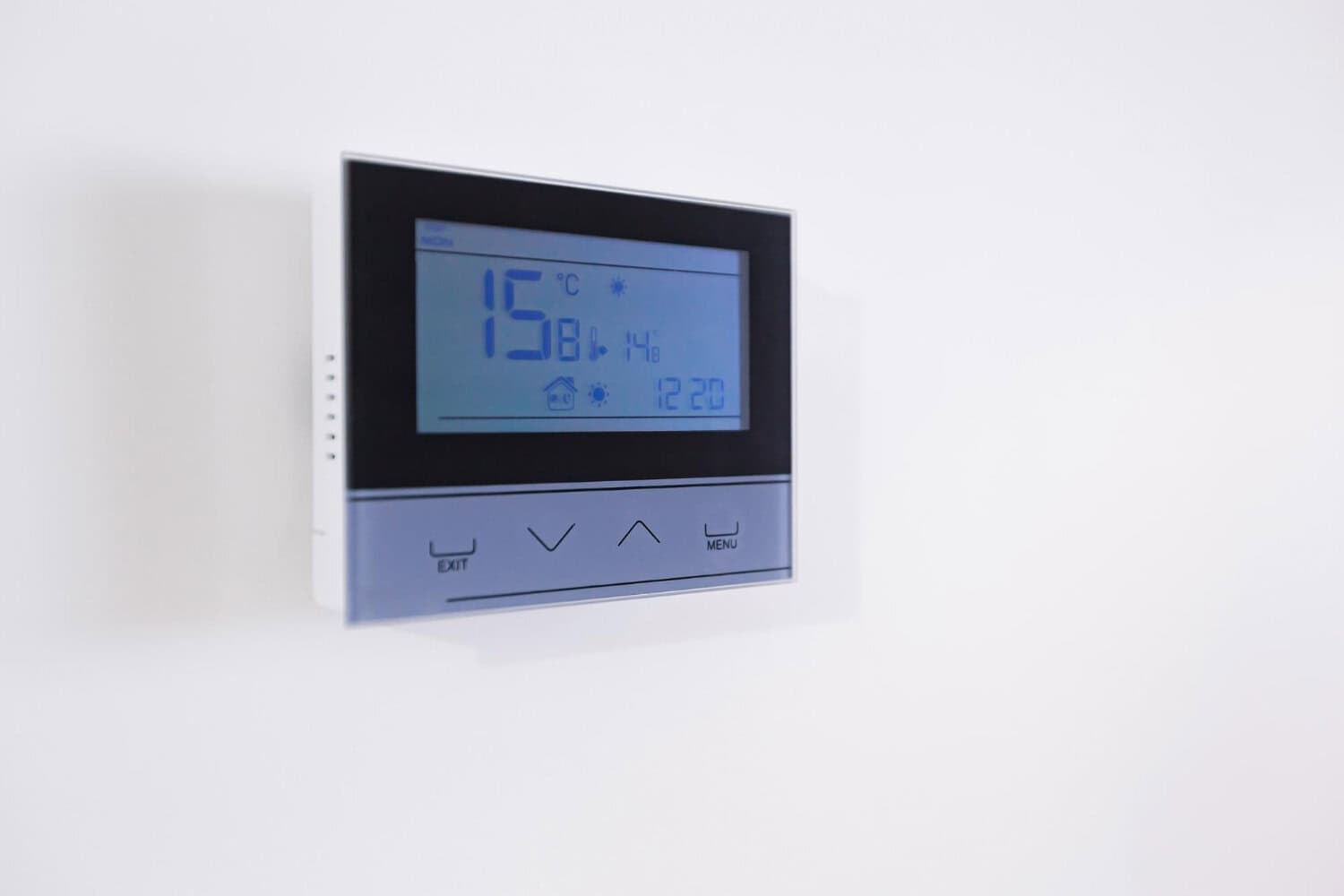
Smart thermostats have become a popular addition to many homes. These devices do more than just control your home’s temperature; they offer convenience, energy savings, and a more comfortable living environment. Understanding how smart thermostats work can help you decide if they are the right choice for your home and can lead to significant savings on your energy bills.
In this article, we’ll explore what smart thermostats do, how they save energy, compare them to traditional thermostats, and provide tips for maximizing your savings. This information will help you make an informed decision on whether a smart thermostat is a good investment for your home.
Understanding Smart Thermostats: What They Do
Smart thermostats are advanced devices that go beyond basic temperature control. These thermostats connect to your Wi-Fi, allowing you to control them via your smartphone, tablet, or computer from anywhere. This means you can adjust your home’s temperature while you’re at work, on vacation, or even just lounging on the couch.
One key feature of smart thermostats is their ability to learn your daily schedule. They track when you’re home, when you’re away, and your temperature preferences. Over time, they create a personalized heating and cooling schedule that maximizes comfort and efficiency. This automatic adjustment helps save energy and keeps your home at the ideal temperature without manual input.
Smart thermostats also provide detailed energy usage reports. These reports show your heating and cooling patterns, how much energy you’re using, and even offer tips on how to save more. Some models include motion sensors to detect activity in the home and adjust settings based on real-time occupancy. Other features can include voice control compatibility with devices like Amazon Alexa or Google Assistant, making it easy to control your thermostat hands-free.
How Smart Thermostats Save Energy
Smart thermostats are designed to save energy and reduce your utility bills. They achieve this through several clever features and adjustments. Here are a few ways they help you save:
1. Automated Scheduling: By learning your routine, smart thermostats create an energy-efficient schedule that reduces heating and cooling when you’re not home. This means your HVAC system runs less often, saving both energy and money.
2. Geofencing: Some smart thermostats use your phone’s location to determine if you’re home or away. When you leave, the thermostat adjusts the temperature to save energy. When you’re on your way back, it starts adjusting to ensure a comfortable temperature by the time you arrive.
3. Remote Control: The ability to control your thermostat from anywhere ensures you can make quick adjustments based on changing plans. Did you forget to turn down the heat before leaving for a weekend trip? Simply adjust it from your phone.
4. Energy Reports: Detailed energy usage reports help you understand where you can make additional savings. By analyzing when you use the most energy, you can adjust your settings or habits to cut costs further.
5. Seasonal Adjustments: As the seasons change, your smart thermostat adjusts to the optimal settings. This ensures you’re not wasting energy by heating or cooling your home unnecessarily during moderate weather.
These features combined can significantly lower your energy usage, resulting in lower utility bills and a smaller carbon footprint. A smart thermostat helps make your home more efficient, comfortable, and eco-friendly.
Comparing Smart Thermostats to Traditional Thermostats
Smart thermostats offer a range of benefits that traditional thermostats simply can’t match. Traditional thermostats typically allow you to set a temperature and forget about it. While some models offer basic programming capabilities, they lack the advanced features of smart thermostats.
Benefits of Smart Thermostats
1. Learning Capabilities: Smart thermostats can learn your habits and adjust the temperature automatically. Traditional thermostats require manual adjustments.
2. Remote Access: Control your home’s temperature from anywhere using your smartphone. Traditional thermostats don’t offer remote control features.
3. Energy Reports: Smart thermostats provide detailed energy usage reports. Traditional models lack this functionality, making it harder to understand energy consumption.
4. Integration with Smart Home Systems: Many smart thermostats can be integrated with other smart home devices for a seamless experience. Traditional thermostats lack this interconnected capability.
Drawbacks of Smart Thermostats
1. Higher Initial Cost: Smart thermostats are generally more expensive than traditional ones. However, the energy savings can offset this cost over time.
2. Complex Installation: Installing a smart thermostat can be more complex than installing a traditional one. You might need professional help to ensure it’s set up correctly.
In conclusion, while traditional thermostats may be simpler and less expensive upfront, smart thermostats offer features that lead to energy savings, convenience, and a more personalized home environment.
Tips for Maximizing Savings with a Smart Thermostat
To get the most out of your smart thermostat, it’s essential to use it effectively. Here are some tips to help you maximize energy savings:
1. Utilize Learning Features: Allow your smart thermostat to learn your schedule and temperature preferences. This helps it to automatically adjust settings for optimal energy efficiency.
2. Set Temperature Ranges: Program your thermostat to maintain a comfortable temperature range rather than a specific temperature. Slight variations can contribute to significant energy savings.
3. Use Geofencing: Take advantage of geofencing features. Your thermostat will adjust the temperature based on your location, saving energy when you’re away and ensuring comfort when you return.
4. Monitor Energy Reports: Regularly check the energy usage reports provided by your thermostat. These reports offer insights and tips on how to fine-tune your settings for better efficiency.
5. Regular Maintenance: Keep your HVAC system in good working order. Clean filters, annual tune-ups, and responding promptly to any issues ensure your system runs efficiently.
6. Seasonal Adjustments: Adjust temperature settings based on the season. Slightly higher temperatures in summer and lower in winter can reduce strain on your HVAC system.
By following these tips, you’ll not only enhance your home’s comfort but also reduce your energy bills, making the investment in a smart thermostat even more beneficial.
Conclusion
Smart thermostats offer a modern, efficient way to manage your home’s temperature while saving energy. They learn your habits, adjust settings automatically, and provide remote control from your smartphone. Compared to traditional thermostats, smart models offer advanced features that lead to greater convenience and energy savings despite their higher initial costs.
If you’re considering upgrading to a smart thermostat or need help optimizing your HVAC system, My Jockey’s cooling service is here to help. Our team is here to ensure your home stays comfortable and energy-efficient all year round. Reach out to us today and take the first step towards smarter home heating and cooling!
